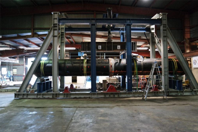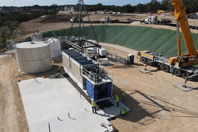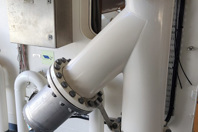ASSET MANAGEMENT RESOURCES
-
Extreme weather and seismic threats are driving a new collaborative approach to infrastructure. By aligning utility needs with academic research and manufacturing innovation, providers can validate resilient technologies and deploy data-backed solutions for long-term reliability.
-
Learn how to design wastewater infrastructure that grows with demand. Modular systems allow phased capacity additions that match actual flow, avoiding the high cost of oversizing and eliminating the need for disruptive, repeated construction.
-
For modern pipelines and pumps, noise and vibration behavior must be considered in system design. Learn how a wastewater pumping station in Greifswald, Germany reduced pump-induced pressure fluctuations by 90%, accompanied by lower vibration levels in the discharge line, with an innovative AI-enhanced damping system.
-
Utilities need greater efficiency, lower costs, and more visibility. So, one would think the uptake for digital solutions would be smoother and faster. But it’s not. Why?
-
Global Water Outcomes expert notes that “water utilities are facing unprecedented challenges and opportunities,” citing the role of digital solutions moving forward.
-
Compared to their senior counterparts, do younger engineers in the wastewater industry care more about the environment? A millennial weighs in.
-
Water and wastewater utilities can get stuck in a cycle of upgrading their legacy operational technology systems. Here’s how to break that cycle.
-
Across the water sector, the same question echoes through utilities and organizations: "We've completed a successful pilot, but now what?" While digital experimentation has become commonplace, the journey from pilot to practice remains challenging.
-
How Edison vs. Tesla shapes today's approach to sustainable water systems.
-
Focusing on lifecycle ROI reveals ozone's value. It significantly reduces chemical and operational costs while extending filter media life, providing measurable long-term financial savings and compliance resilience.











